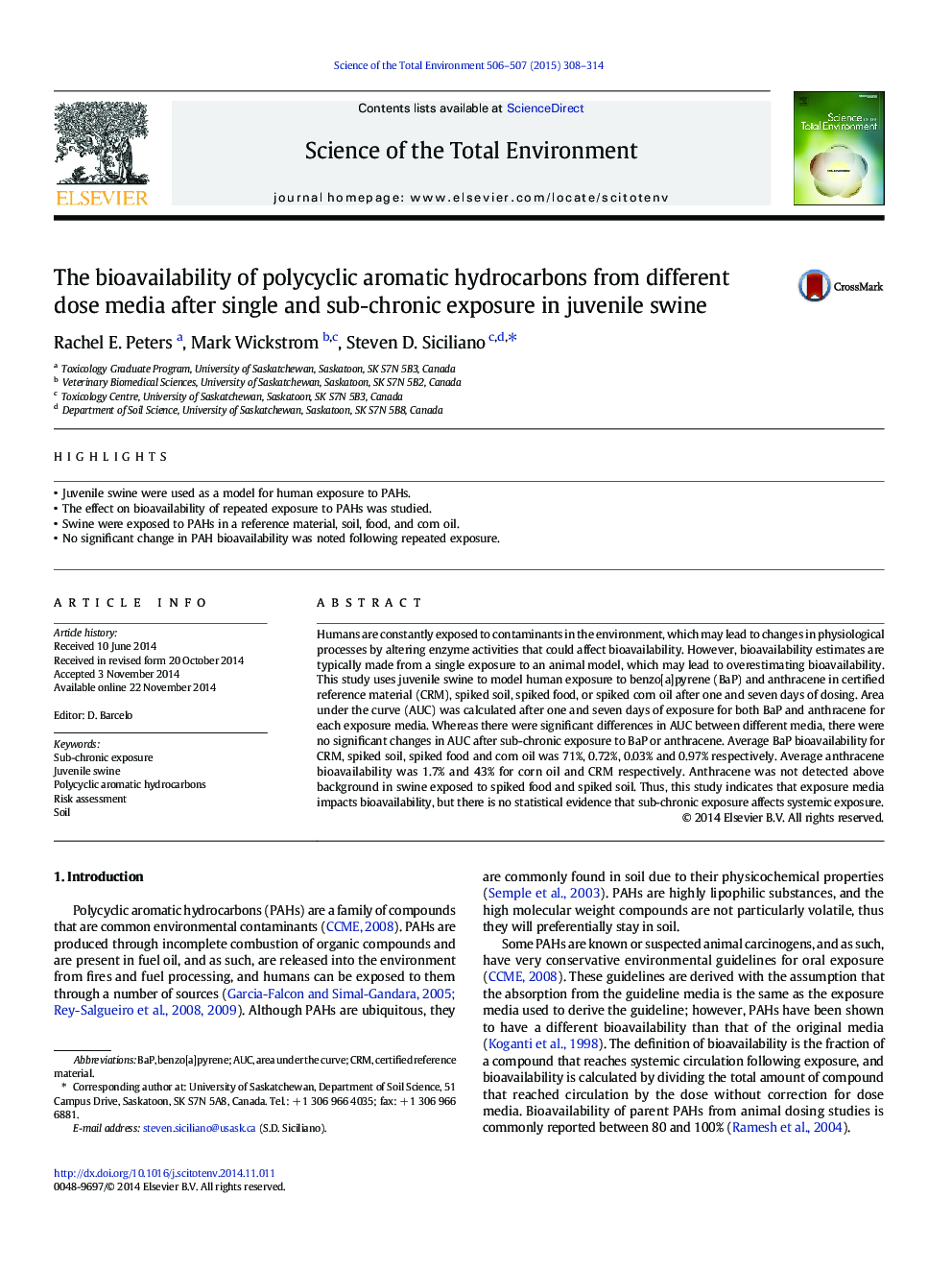| Article ID | Journal | Published Year | Pages | File Type |
|---|---|---|---|---|
| 6327710 | Science of The Total Environment | 2015 | 7 Pages |
Abstract
Humans are constantly exposed to contaminants in the environment, which may lead to changes in physiological processes by altering enzyme activities that could affect bioavailability. However, bioavailability estimates are typically made from a single exposure to an animal model, which may lead to overestimating bioavailability. This study uses juvenile swine to model human exposure to benzo[a]pyrene (BaP) and anthracene in certified reference material (CRM), spiked soil, spiked food, or spiked corn oil after one and seven days of dosing. Area under the curve (AUC) was calculated after one and seven days of exposure for both BaP and anthracene for each exposure media. Whereas there were significant differences in AUC between different media, there were no significant changes in AUC after sub-chronic exposure to BaP or anthracene. Average BaP bioavailability for CRM, spiked soil, spiked food and corn oil was 71%, 0.72%, 0.03% and 0.97% respectively. Average anthracene bioavailability was 1.7% and 43% for corn oil and CRM respectively. Anthracene was not detected above background in swine exposed to spiked food and spiked soil. Thus, this study indicates that exposure media impacts bioavailability, but there is no statistical evidence that sub-chronic exposure affects systemic exposure.
Keywords
Related Topics
Life Sciences
Environmental Science
Environmental Chemistry
Authors
Rachel E. Peters, Mark Wickstrom, Steven D. Siciliano,
